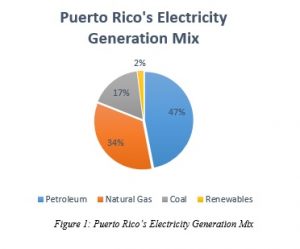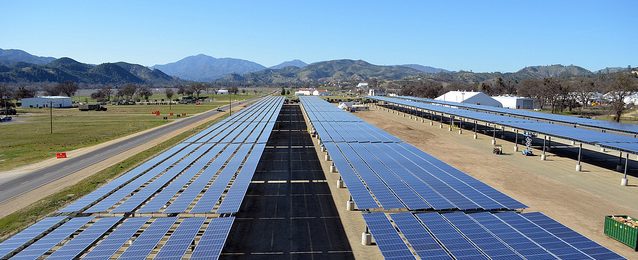By Keston Mario Finch (CEP16)
This might very well be the busiest year ever of the Atlantic hurricane season. With two months left, the Americas shudder at the thought of who’s next, and when. Three major hurricanes—Harvey, Irma, and most recently Maria—made landfall within a one-month timespan, seriously damaging several U.S. cities and devastating many Caribbean islands.
One of the islands gathering the fragments and trying to return to some semblance of life is the U.S. Territory of Puerto Rico. The devastation to its built environment, including the territory’s power grid, water supply centers, communications systems, and roadways, stems partly from its government’s inability to invest in resiliency planning efforts.
A Devastating Blow

As of this writing, Puerto Rico remains in a state of emergency. Ninety percent of the island continues void of grid-based power. This lack of electricity has already 1) affected pumping stations—leaving 44 percent of the population without drinking water, 2) inhibited the wastewater treatment process—resulting in prolonged sewage releases, and 3) obstructed telecommunication systems vital to performing damage assessments. According to Puerto Rican Governor Ricardo Rosselló, it could be months before the island regains full electrification.
Hurricane Maria, simply put, delivered a knockout blow to the island’s already bankrupt government-owned utility company—the Puerto Rico Electric Power Authority (PREPA)—by damaging 80 percent of the grid’s transmission and 100 percent of its distribution infrastructure. Under PREPA’s management, this four-decade-old power network—which uses the most unsustainable fuels at the highest cost—has deferred modernization and even repairs for years due to financial distress. Before the hurricane, regular black and brownouts were business-as-usual.
But the devastation wrought by Maria is also an opportunity. The island should use it to help build a base case for completely reimagining its energy system, thereby improving its power resiliency during the weather emergencies that will become more frequent with climate change. To succeed, this base case needs to incorporate distributed renewable energy resource technologies like microgrids.
Reconnecting and Reconstructing a Better Puerto Rico
Distributed energy resource technologies (DER) or microgrids have been around for years, but the technology has come a long way recently in terms of commercial deployment. Microgrids can be powered by batteries, generators or renewable energy harnessed from wind turbines and solar panels.

These small-scale energy distribution networks are versatile enough to synchronize with the main grid yet afford owners the flexibility to disconnect from the regional grid and generate energy independently during emergencies—hurricanes, fires, and earthquakes—or when elevated energy demand stresses the distribution system.
Back in 2012, when damage from Hurricane Sandy darkened swaths of the US northeast for days, microgrids were integral to keeping the lights on for some residents in Maryland, New Jersey, and Manhattan, demonstrating their robustness during times of disaster. Following the example of these communities, states like Connecticut initiated statewide microgrid programs to maintain power in the event of a blackout or natural disaster.
Puerto Rico’s PREPA should initiate a similar program. Microgrids, especially those powered by renewables, could keep such critical facilities as 911 call centers, emergency shelters, hospitals, and telecommunication facilities energized even if the surrounding grid is down.
Microgrids Could Be Life Changing for Puerto Rico
With the right enabling factors, Puerto Rico could be a prime locale for deploying microgrids, which are capable both of functioning continually under natural disaster conditions and of fulfilling everyday energy needs.
 Currently, fossil fuel products drive electricity generation in Puerto Rico. Renewable power continues to be an underdeveloped area (Figure 1). The island’s reliance on oil-fueled power plants makes it subject to energy insecurity, supply interruptions, inflated transport costs, and high retail electricity prices—Puerto Ricans pay almost three times more per kWh than mainland US residents. Because the cost of renewable energy generation and microgrids is significantly lower than that of traditional fossil fuels, both are attractive options for Puerto Rico.
Currently, fossil fuel products drive electricity generation in Puerto Rico. Renewable power continues to be an underdeveloped area (Figure 1). The island’s reliance on oil-fueled power plants makes it subject to energy insecurity, supply interruptions, inflated transport costs, and high retail electricity prices—Puerto Ricans pay almost three times more per kWh than mainland US residents. Because the cost of renewable energy generation and microgrids is significantly lower than that of traditional fossil fuels, both are attractive options for Puerto Rico.
Puerto Rico’s recovery will likely depend heavily on improving the island’s grid, which should include investments in infrastructure to support distributed energy resource technologies. In particular, it would be unwise for either PREPA or the US federal government to finance grid-based reconstruction efforts that fail to properly account for environmental risks. Microgrids need to be part of the solution.
For an island like Puerto Rico, microgrids could be the driving force behind lower costs, better resiliency, improved adaptive capacity, and relief for future hurricane victims. Given the extent of Maria’s destruction, PREPA must look to the future as it begins the long-term reconstruction process.

